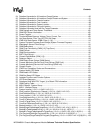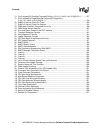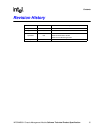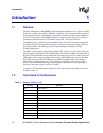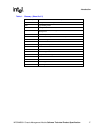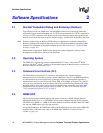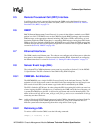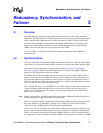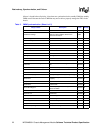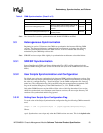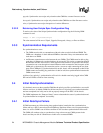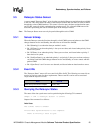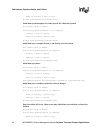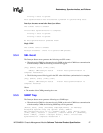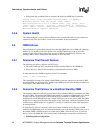
MPCMM0001 Chassis Management Module Software Technical Product Specification 21
Redundancy, Synchronization, and Failover
Redundancy, Synchronization, and
Failover 3
3.1 Overview
The CMM supports redundant operation with automatic failover in a chassis using redundant
CMM slots. In systems where two CMMs are present, one acts as the active shelf manager and the
other as standby. Both CMMs monitor each other, and either can trigger a failover if necessary.
Data from the active CMM is synchronized to the standby CMM whenever any changes occur.
Data on the standby CMM is overwritten. A full synchronization between active and standby
CMMs occurs on initial power up, or any insertion of a new CMM.
The active CMM is responsible for shelf FRU information management when CMMs are in
redundant mode.
3.2 Synchronization
To ensure critical files on the standby CMM match the data on the active CMM, the active CMM
synchronizes its data with the standby CMM, overwriting any existing data on the standby CMM.
An exception to this is the password reset procedure, detailed in Section 9, “Resetting the
Password” on page 99. When the password reset switch is activated on the standby CMM, the
password will be synchronized to the active CMM.
The CMMs will initially fully synchronize data from the active to the standby CMM just after
booting. An insertion of a new CMM will also cause a full synchronization from the active to the
newly inserted standby. Date and time are synched every hour. Partial synchronization will also
occur any time files are modified or touched via the Linux* “touch” command with the exception
of all *.sif and *.bin files in the /etc/cmm directory.
The *.sif (ALL SIF files), and *.bin (SDR Files) files under /etc/cmm are synchronized only once
(when the CMMs establish communication). A 'touch' on those files at any later time will not
perform a sync operation. Also, any updates to these files always happen as part of the software
updates and not in isolation.
Note: During synchronization, the health event LEDs on the standby CMM may blink on and off as the
health events that were logged in the SEL are synchronized.
Below is a list of items that are synchronized between CMMs. During a full synchronization, all of
these files and data are synchronized. A change to any of these files results in that file being
synched. The active CMM overwrites these files on the standby CMM.
There are two "levels" of files that get synchronized. In order to normally manage the chassis, the
priority 1 files must be synchronized after power up or installation of a brand new CMM into the
chassis. It is absolutely necessary that a standby CMM has the priority one files synched before a
successful failover can occur. When a brand new CMM boots the first time as a standby, if a CMM



